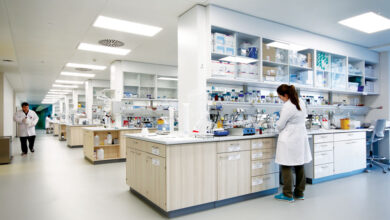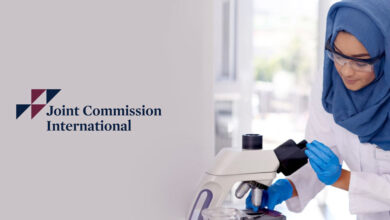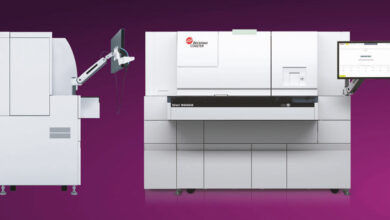Sysmex joins the fight against AMR
Sysmex joins the fight against AMR
AMR knows no boundaries. It can affect anyone, of any age, in any country

The phrase ‘survival of the fittest’ also applies to microbiology. Bacteria, viruses and parasites are constantly evolving and improving their strategies to make us their hosts. They can outsmart our medical advancements, and if we don’t take action, these microorganisms will become harder and harder to treat, or may even become untreatable.
Antimicrobial resistance (AMR) is an ever-growing concern in the healthcare community. AMR is the ability of a microorganism such as bacteria, viruses and parasites to stop an antimicrobial (e.g. antibiotics) from working against it. Because this is already happening, more and more patients require very strong solutions, which can have harmful side effects on the body. AMR can also lead to treatments becoming ineffective and accelerate the spread of infections. The United Nations has declared that AMR is a global health crisis and if we don’t act now, annual deaths related to AMR could surpass annual cancer fatalities.1
The World Health Organization created a global action plan to tackle AMR.2 The plan includes five strategic objectives, several of which we can directly support with our expertise at Sysmex.
The fight starts with diagnostics
Specific diagnostic information can lead to more accurate diagnoses, thereby leaving fewer antimicrobial prescriptions to chance. That means giving microorganisms fewer opportunities to evolve and outsmart antimicrobials. As an in-vitro diagnostics company, we offer innovative solutions to combat AMR because comprehensive UTI screening, malaria detection and finding the root cause of infections can help slow it down.
Sysmex Middle East joined the World Antibiotic Awareness Week from 18-24 November to improve awareness and understanding of AMR, as well as learn about how Sysmex can support the optimal use of antimicrobials now and in the future. We invite you to participate and join the fight against AMR by spreading awareness with friends, family and colleagues. Follow us on social media for updates and use the hashtag #AMRfighter when sharing!
SOURCES
1 https://news.un.org/en/node/1025511/antimicrobial-resistance-a-global-health-emergency-un-ahead-of-awareness-week-2
2 https://www.who.int/antimicrobial-resistance/global-action-plan/en/
Urinary tract infection (UTI)

A UTI is an infection which is often caused by bacteria in the urinary system. Urine is normally sterile, but an infection can occur when foreign bacteria are introduced into the urinary system. In most cases, bacteria travel up the urethra to the bladder. It is estimated that 150 million UTIs occur yearly on a global basis, making it one of the most frequent bacterial infections worldwide1. This is just one source contributing to the spread of antimicrobial resistance. There are countries in many parts of the world where treatment for UTIs with fluoroquinolone antibiotics is now ineffective in more than half of patients2.
The World Health Organization created a global action plan to tackle AMR.2 The plan includes five strategic objectives, several of which we can directly support with our expertise at Sysmex.
Affecting many more women than men, UTIs account for nearly 25% of all infections3
The first step in diagnosing a UTI is typically a simple dipstick test using a urine sample, which tests for nitrite-producing bacteria as well as the presence of white and red blood cells. It’s quick, but not the most accurate or reliable method because it can result in a false negative4. Lab analysis of the urine can also consist of a urine culture, which can tell the physician of the presence of bacteria that may be causing the infection and lead the way for follow-up testing to identify the most effective medication.
In an ideal situation, all samples that are suspected of UTI would be sent to the microbiology lab to have a culture created. This is not the case as it requires a lot of time and resources, so only the dipstick text is used. Even then, many of the samples that are sent for a culture are negative in the end. However, the result is only available after 12 to 24 hours which can sometimes lead to unnecessary antibiotic prescriptions on suspicion. In the Unispital Zürich, for example, around 80% of cultures prepared on suspicion of UTI are negative, therefore the ability to rule UTI negative samples early on can save a lot of hassle5.
Imagine being able to rule out UTI negative samples in <1 minute If you would like to know more about how Sysmex solutions can help you optimise your laboratory workflow, check out our UN-Series. #AMRfighter
SOURCES
1 Flores-Mireles, A. L., Walker, J. N., Caparon, M., & Hultgren, S. J. (2015). Urinary tract infections: epidemiology, mechanisms of infection and treatment options. Nature reviews microbiology, 13(5), 269-284.
2 World Health Organization. (2018) Antimicrobial Resistance. https://www.who.int/en/news-room/fact-sheets/detail/antimicrobial-resistance
3 Foxman, B. (2002). Epidemiology of urinary tract infections: incidence, morbidity, and economic costs. The American journal of medicine, 113(1), 5-13.
4 Mambatta, A. K., Jayalakshmi Jayarajan, V. L. R., Harini, S., Menon, S., & Kuppusamy, J. (2015). Reliability of dipstick assay in predicting urinary tract infection. Journal of family medicine and primary care, 4(2), 265.
5 Fischer, V. (2019). Ein neuer Schritt zur schnelleren Urinanalytik. xtra, 50-52.














